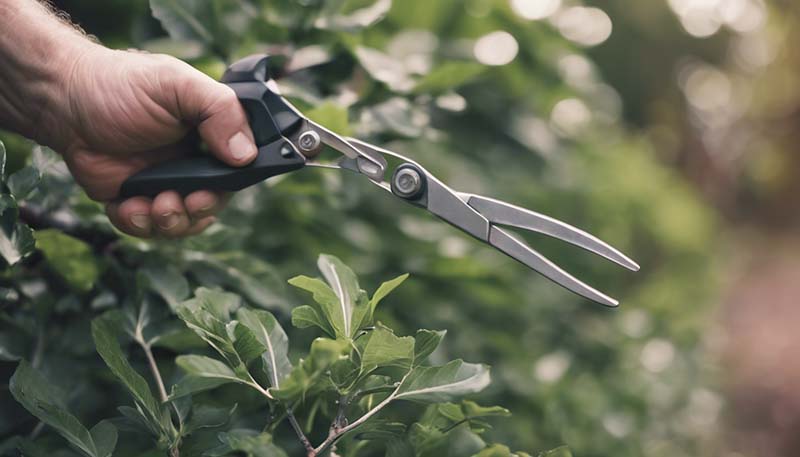The Role of Gardening Hand Pruners in Pruning and Trimming
Gardening is an art that requires both a green thumb and the right tools. Among the many implements found in a gardener\'s arsenal, hand pruners stand out as indispensable for their precision, ease of use, and versatility in pruning and trimming tasks. This article delves into the importance of hand pruners, their types, how to use them effectively, and the best practices for maintenance.
## Introduction to Hand Pruners
Hand pruners, also known as hand shears or secateurs, are compact, handheld tools designed for precise cutting of small to medium-sized branches, stems, and floral materials. They are an essential part of any gardener\'s toolkit, offering the control and accuracy needed for detailed gardening work.
## Types of Hand Pruners
1. **Bypass Pruners**: These have two sharp blades that bypass each other, making a clean cut with minimal damage to the plant tissue. They are ideal for general pruning and are suitable for live wood.
2. **Anvil Pruners**: One blade is stationary (anvil), and the other is movable. They provide a more aggressive cut, suitable for dead wood or branches that are slightly thicker.
3. **Ratcheting Pruners**: These incorporate a ratchet mechanism that allows for easier cutting with less effort, especially useful for those with limited hand strength.
Advertisement
4. **Cutting Pruners**: These are the most basic type, with one blade and one hook. They are typically used for light pruning tasks.
5. **Specialty Pruners**: Some pruners are designed for specific tasks, such as pruning roses, cutting through thick branches, or even pruning electrical wires.
## Effective Use of Hand Pruners
1. **Choosing the Right Pruner**: Select a pruner that fits your hand comfortably and is the appropriate size for the job.
2. **Sharpening**: Keep your pruners sharp to ensure clean cuts. Dull blades can crush plant tissue, leading to diseases and slower healing.
3. **Cutting Angles**: Make cuts at the right angle to promote healing and growth. For most pruning, a 45-degree angle is recommended.
4. **Pruning Techniques**: Learn different pruning techniques such as thinning, heading back, and renewal pruning to apply them correctly depending on the plant species and your gardening goals.
5. **Timing**: Prune at the right time for the plant species. Some plants prefer pruning in late winter or early spring, while others are best pruned after flowering.
## Pruning and Trimming Techniques
1. **Thinning**: Remove entire branches or stems to improve air circulation and sunlight penetration. This is done by cutting back to the main stem or to a side branch.
2. **Heading Back**: Shorten the stems of woody plants to encourage branching and a fuller shape. Avoid cutting into old wood, as this can harm the plant.
3. **Renewal Pruning**: This is a more aggressive form of heading back, removing stems down to the base or close to the ground to rejuvenate older plants.
4. **Deadheading**: Remove spent flowers to encourage repeat blooming and to maintain a neat appearance.
5. **Formative Pruning**: Used to shape plants, especially young ones, to develop a desired form and structure.
## Maintenance of Hand Pruners
1. **Cleaning**: After use, clean your pruners with a brush to remove any dirt or debris. This prevents the spread of diseases and rust.
2. **Disinfecting**: Use a disinfectant spray or a solution of bleach and water to clean the blades to prevent the spread of plant diseases.
3. **Lubricating**: Apply a few drops of oil to the pivot point where the two blades meet. This keeps the action smooth and ensures longevity.

4. **Storing**: Store your pruners in a dry place, preferably in a protective case or sheath to protect the blades.
5. **Regular Inspection**: Check your pruners regularly for signs of wear and tear. If the blades become nicked or damaged, they may need to be replaced.
## Conclusion
Hand pruners are a gardener\'s best friend, offering precise control and a wide range of applications from pruning to trimming. By understanding the different types, mastering effective pruning techniques, and maintaining your pruners properly, you can ensure the health and beauty of your garden. Investing in a good pair of hand pruners and using them correctly is one of the most rewarding practices in gardening.
Comment